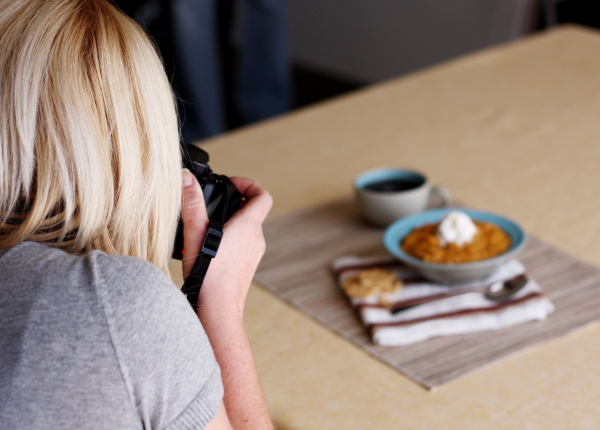If there’s one mistake that’s perpetually made by thousands of newcomers to the world of food photography, it’s underestimating the importance of good food styling. The whole subject can be illustrated in one very simple example; buy yourself a Big Mac and then compare the real thing to how it looks on the menu board. Now, this may be the most cliché comparison in the world to make, but it’s also the most brilliantly illustrative of the point – food styling can make a limp and soggy piece of cholesterol-filled fast food look like something you’d give your high teeth for.
According to the experts at Howard Shooter, to ignore food styling is a little like taking a photo of a stray dog and wondering why it doesn’t come out like a shot of a supermodel – silly, pointless and likely to breed demotivation. So with this in mind, what follows is a quick introduction to the subject of food styling covering a few of the most basic tips you’ll need to take on board before moving any further forward:
1 – Undercooking
So, right off the bat comes the crucially important pointer that when it comes to shooting great food snaps, undercooked food tends to look better than if it was fully-cooked. Take for example onions, carrots, broccoli or even a good piece of steak – all of these and so many more are vibrant in colour and mouth-watering to look at when raw, but lose their lustre the longer they’re cooked for. Steak joints usually present their cuts raw for a reason.
2 – Be Meticulous
When it comes to food styling, there’s no such thing as 99.9% perfect. If there’s even a shred of anything that looks old, limp, wilted, discoloured or less than flawless, you cannot and must not allow it to go in the shot. It’s not until you get rid of the ‘it will do’ attitude that you’ll make any progress in the field.
3 – Cool it Down
Another key tip always overlooked until tried out is that of cold food always photographing better than hot food. No matter what it is you’re looking to take a shot of, there’s a pretty strong chance you’ll get way better shots if you allow it to cool down first. What’s more, cold food is much easier to manipulate and strategically arrange into the shape/design you’re looking for.
4 – Add Oil
Grill a steak, allow it to go cold and take a photograph of it – chances are in most instances it will look dry and unappealing. However, take exactly the same steak and either brush or spray it with a little oil before taking the shot and you’ll have yourself a steak than now looks like it’s exploding with moisture. It’s a common and crucially important technique that works wonders with anything on the dry side you could do with adding a little shine and juiciness to – try it with everything!
5 – Make it Irresistible
Depending on the kind of food you’re photographing, remember the kinds of things that make the ordinary irresistible. For example, a picture of a glass of beer can be taken to new heights if said glass is frosty as can be with condensation slowly dripping down the outside. Likewise, a bowl of chocolate ice cream with a little melting down the outside of the bowl works wonders, or a piece of fruit photographed wet to make it look ultra-juicy.
6 – Great Garnishes
Always remember that if you plan on garnishing your main centre-focus with anything else at all, it has to compliment it not just visually, but also in an appetising sense. Your garnishes should be the kinds of things that would be eaten with the dish itself, so be sure to select appropriate sides, sauces and accompaniments.
7 – Work in Progress Shots
You’d be amazed on just how many occasions a few shots of a dish in the progress of being prepared are far more appetising than the finished piece. Revisiting the classic steak once again – a big slab of beef on a charcoal grill with a half tomato and onion rings close by will always, ALWAYS look more appealing than a well-done steak on a plain white plate.
8 – Dimensions
Last but not least, never forget that the flatter and more one dimensional the food on the plate is, the more you’ll struggle to make it ‘pop’ when it comes to the final shot. Always try to add at least a little shape or height to what you’re shooting, even if it takes accompaniments and garnishes to make it happen.

